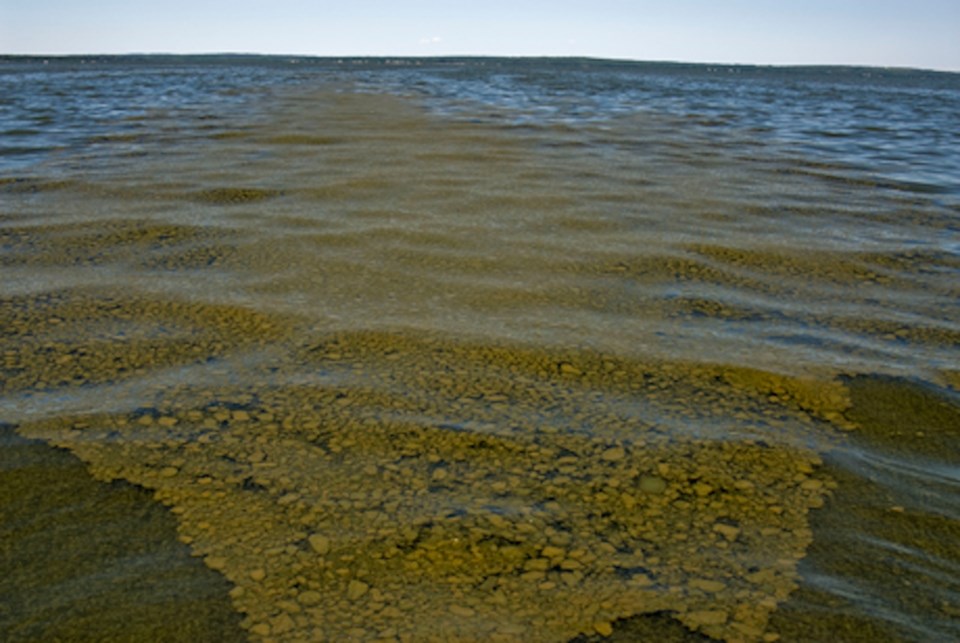ATHABASCA — A cyanobacteria, or blue-green algae alert has been issued for Jenkins Lake along Highway 2 between Island Lake and Lawrence Lake.
Alberta Health Services issued the alert on July 8, warning locals and lake visitors to avoid all contact with blue-green algae blooms. Swimming, wading, and allowing pets in areas where cyanobacteria is visible is not recommended, If contact does occur, wash with tap water immediately.
Do not drink or cook with untreated water from any recreational bodies of water at any time. Boiling water with cyanobacteria does not kill the toxins produced by blue-green algae. Bring clean, safe sources of drinking water for people, pets, and livestock, and avoid feeding pets fish trimmings or whole fish from Jenkins Lake. Human consumption of whole fish and fish trimmings should be limited, as fish may store toxins in the liver, but consumption of fish fillets from the lake is safe.
Blue-green algae occurs naturally, especially in calm weather conditions. It can look like scum, globs or grass clippings on the surface of the water, and can be blue-green in colour, as well as greenish-brown, brown, or pinkish-red, accompanied by a musty or grassy scent.
Contact with cyanobacteria may result in skin irritation, sore throat, rashes, sore red eyes, swollen lips, nausea, fever, and vomiting and/or diarrhea, and can appear more pronounced in children. Symptoms typically appear within one to three hours of exposure, and can take a day or two to resolve, however pet exposure to cyanobacteria can be fatal.
Blue-green algae can be transferred to nearby bodies of water through wind and other weather conditions. Areas of Jenkins Lake where cyanobacteria is not visible can still be used for recreational purposes.
For more information on active cyanobacteria health advisories, visit AHS's webpage or call 811.



